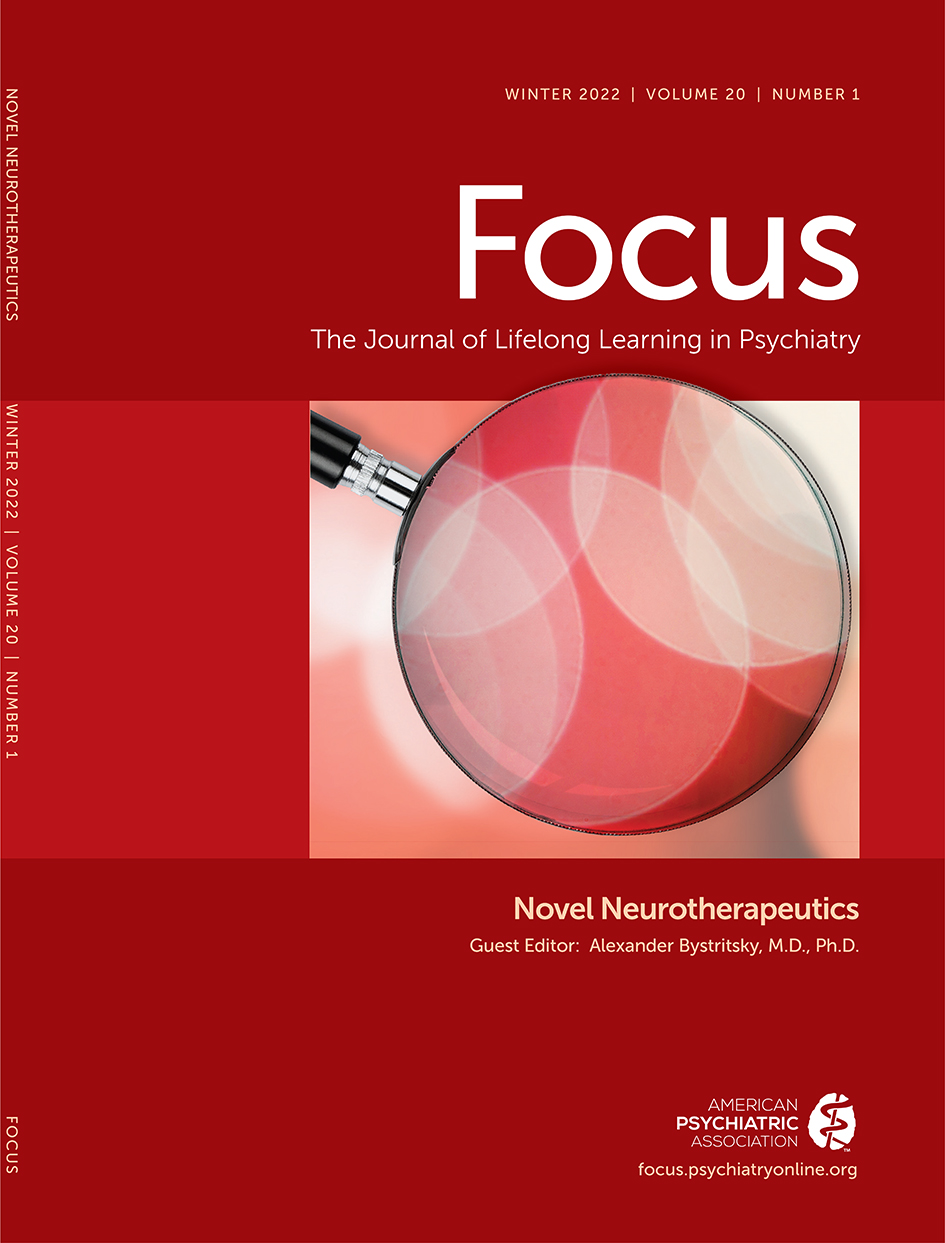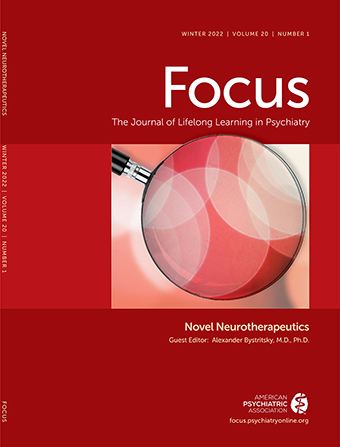Until recently, the two primary options for treating disorders of affect and anxiety were psychotherapy and psychopharmacology. However, in the past two decades, substantial new developments have led to the appearance of neuromodulatory approaches to treat these disorders. Such approaches include repetitive transcranial magnetic stimulation (rTMS), transcranial direct current stimulation (tDCS), and deep brain stimulation (DBS). However, these new approaches are not without their drawbacks.
Modalities of Stimulating the Brain: Inherent Strengths and Weaknesses
rTMS and tDCS cannot stimulate deep brain regions known to be involved in the pathology of major neuropsychiatric disorders (e.g., amygdala and anxiety, subgenual cingulate and depression). rTMS is indicated only for use in treatment-refractory depression and obsessive-compulsive disorder (OCD), and tDCS does not have any psychiatric indications. These techniques also lack the necessary spatial resolution to target fine neuroanatomical structures or structural subregions or nuclei. Furthermore, although rTMS waves can pass through the skull unabated, in the case of tDCS, the skull is known to be a poor conductor of electricity, resulting in widespread nonfocal stimulation of large swaths of the brain (
1).
DBS can reach deep brain targets with a high spatial resolution to accurately stimulate these deep regions. Indeed, DBS is a very clinically powerful and continuously evolving approach. However, one must keep in mind that DBS is an invasive neurosurgical procedure with potential risks, including (but not limited to) bleeding and infection. The DBS system consists of placement of electrodes within the desired brain region, extension wires running from the brain electrodes to an internal pulse generator (IPG)/battery, and the IPG/battery pack (typically implanted in the subcutaneous infraclavicular chest region). Previously, the battery pack needed to be replaced every few years, and the electrode may have needed repositioning, thereby requiring additional surgery. Fortunately, with recent advances, these are now rare concerns in DBS.
Lately, there has been a push in psychiatry to move toward a circuit- or network-based approach for neuropsychiatric conditions (e.g., hyperactivity of the default mode network [medial prefrontal cortex, posterior cingulate, angular gyrus] is implicated in several different neuropsychiatric disorders). Thus DBS provides an opportunity for a systems-based approach to treat neurological and psychiatric conditions (
2,
3). However, given that the circuits that underlie different psychiatric conditions are not yet as well defined, it is difficult to determine the optimal neuroanatomical location for placement of the DBS leads for psychiatric conditions (
3). Thus a thorough mapping or understanding of the brain circuitry underlying each neuropsychiatric syndrome is needed.
Transcranial focused ultrasound (tFUS) offers the ability to perform deep and focal stimulation without the need for surgical implantation while also allowing for multiple nodes of a proposed dysfunctional circuit to be modulated in rapid succession (
4). In this vein, tFUS can be used for a system-based and circuit-based interrogation of underlying neuroanatomy. Although tFUS is characterized by several parameters, for this review, only intensity will be discussed. There are many published reviews of parameters, and a thorough discussion of these will not be helpful to the reader of this journal. Intensity can be measured at either the peak or the average of the ultrasound wave. Again, for this review, only the most reported measure will be discussed: the spatial-peak, temporal-average intensity—I
SPTA.
Low-Intensity tFUS: A Robust Technique for Neuromodulation and Brain Mapping
We begin by discussing low-intensity tFUS. Low-intensity tFUS is traditionally defined as tFUS at intensities that do not cause appreciable heating of the tissue, and these are the energies used for brain mapping and neuromodulation (
5). The mechanism of action involves the mechanical interaction of acoustic waves with the targeted neural tissue, leading to changes in the conformation and activity of that tissue and, thereby, its function. In other words, low-intensity tFUS works by a mechanism of mechanical neuromodulation. A review article by Jerusalem et al. (
6) provides more information on ultrasound mechanisms.
Low-intensity tFUS has been used for several purposes. One primary use is for mapping neuronal circuits (
7,
8), such as those associated with the dorsolateral and medial prefrontal cortices, orbital frontal cortex, posterior cingulate, anterior cingulate, and subgenual cingulate cortices (
9). Hyperactivity in several of these regions is known to be associated with ruminative disorders. For example, repeated studies have shown that patients with OCD have hyperactivity in the orbitofrontal cortex (
10–
12) and that normalization of their hyperactivity occurs during treatment (
13). tFUS allows for the causal exploration between modulation of neural activity of a region and subsequent behavioral activity changes in the individual. This is one of the critical advantages of low-intensity tFUS for brain mapping and research purposes.
Furthermore, given its ability to excite and inhibit neural regions and circuits (
14–
16), tFUS has already been explored as a therapeutic modality for mood, both on its own by way of stimulation of the right prefrontal cortex (
17) and as a way of enhancing delivery of exosomes to Brodmann area 25 (
18), which is known to be hyperactive in depressed patients (
19). Delivery of small molecules and therapeutics is briefly discussed below, and another article in this issue provides more on this topic.
Several studies have used low-intensity tFUS to modulate the activity of the thalamus. In one study using the Food and Drug Administration’s (FDA) derated limit of intensity (720 mW/cm
2), Badran et al. (
20) demonstrated that 10 trains of 30-second duration can successfully reduce the threshold of pain in healthy adults. This use of the FDA derated limit appears frequently in the low-intensity tFUS literature. However, as the FDA itself notes, this limit is for diagnostic ultrasound. As such, it does not apply to therapeutic ultrasound. Nevertheless, in the interest of subject safety and ease of obtaining Institutional Review Board approval, many neuromodulatory studies are conducted at the FDA limit. Other such studies include stimulation of basal ganglia in healthy volunteers (
7) and stimulation of central thalamus in disorders of consciousness (
21).
High-Intensity tFUS for Use for Incisionless Surgery
In contrast to low-intensity tFUS, high-intensity tFUS has also been used for clinical and research applications. High-intensity tFUS is typically used by neurosurgeons for incisionless (i.e., no surgical incisions or burr holes) lesioning and ablation of brain targets and is currently FDA approved for use in patients with essential tremor and tremor-dominant Parkinson’s disease. Ongoing studies investigate the use of high-intensity tFUS to perform bilateral anterior capsulotomy in patients with both refractory OCD and refractory major depressive disorder (
22,
23). Although these approaches have shown some preliminary success, they have been used on a total of six major depressive disorder patients and six OCD patients. Furthermore, high-intensity tFUS has not yet received FDA approval for the treatment of major depressive disorder or OCD. Thus the practical concerns of neurosurgery are, in the case of major depressive disorder, exacerbated by the still-early evidence base.
Nevertheless, the rise in incidence of major depressive disorder warrants increased investigation of alternate therapeutic modalities, including tFUS. Both high- and low-intensity tFUS are presently being explored for this purpose. High-intensity tFUS has demonstrated efficacy in treating these conditions (
24), but efficacy has not yet been shown with low-intensity tFUS. That study, however, involved only four subjects and was not blinded, and long-term follow-up was not conducted. Furthermore, one subject experienced a drop in IQ.
Unlike high-intensity tFUS, however, low-intensity tFUS is reversible, allowing for stimulation of different targets to see which target best improves symptoms, allowing for the treatment to be tailored to the specific psychopathology of each patient. This is especially important, given the rise of symptom domains for diagnosis and treatment of psychiatric conditions. The use of symptom domains for diagnosis and treatment is discussed in further detail in another article in this issue.
A Vision for tFUS
In our opinion, it is important that this review not only survey the field of tFUS in psychiatry as a therapeutic and diagnostic modality but also highlight pragmatic opportunities and potential directions for treatment and patient referral. As such, we focus the rest of this review on future applications of tFUS.
It has been established that tFUS could be used to open the blood-brain barrier (BBB) (
25). Traditional methods of opening the BBB involve the use of mannitol (
26), which causes contraction of endothelial cells. This allows for noninvasive liquid biopsy of regions of interest, such as in cancer (
27). However, this approach leads to opening of the BBB throughout, with little specificity. As such, tFUS (with or without microbubbles) could thus be used to focally open the BBB in a way that could not be done previously. In the near future, tFUS could perhaps replace mannitol for focal noninvasive liquid biopsy.
Although noninvasive biopsy carries fewer risks than traditional invasive biopsy, opening the BBB has its own concerns as well. A rodent study found that multiple treatments of tFUS with simultaneous microbubbles led to changes in diffusion tensor imaging and glucose chemical exchange saturation transfer weighted imaging (
28). In this study, immunohistochemistry demonstrated significant dilation of vasculature and decreased expression of GLUT3 in neuronal populations in the sonicated cortex and hippocampus. Thus it is important to consider the long-term sequelae of tFUS therapy.
Additional uses of tFUS could be to enhance delivery of exosomes (
29) and macromolecules (
30). It is known that tFUS causes an increase in cerebral perfusion of stimulated areas (
31). Increased perfusion enhances the delivery of exogenous exosomes and macromolecules to the desired region, thereby allowing for the focal delivery of therapeutics to regions of interest. For example, circulating exosomal miRNA could be forced into the hypothalamus through tFUS stimulation of the hypothalamus. Because exosomal miRNA has been shown to slow the aging process (
32), tFUS may potentially be used to improve the delivery of exosomal miRNA to the hypothalamus. Other similar applications include the use of tFUS to open cages for focused drug delivery (
33). Thus, although drug cages would circulate systemically, the cages would open (and thus release the drugs contained within them) only in regions where ultrasound is being applied. Using tFUS to enhance delivery of biologicals to the brain is the subject of another article in this issue.
Neuroinflammation is a common marker of many neurological and psychiatric conditions—e.g., depression (
34), stroke (
35), and traumatic brain injury (TBI) (
36). It has been suggested that the neuroinflammation and oxidative damage seen in depression may contribute to the worsening of conditions that are characterized by inflammation (e.g., stroke and TBI) (
37). Given the recent evidence that COVID-19 pathogenesis is marked by a strong proinflammatory response leading to respiratory, cardiovascular, and neurological damage (
38), the COVID-19 pandemic represents an opportunity for a paradigm shift in how to view these conditions (i.e., depression) through the lens of their relationship to the underlying inflammatory processes and begin to think about using ultrasound as a way of treating the inflammation of these diseases.
In a murine model of ischemic stroke, tFUS was applied to the ischemic hemisphere for 7 consecutive days, 1 week postischemia (
39). In this study, infarct volume was significantly reduced in the treated group, and the expression of anti-inflammatory cytokines IL-10 and IL-10R was significantly upregulated. In Parkinson’s disease, tFUS of the subthalamic nucleus in mice has been shown to suppress inflammation (
40). Specifically, tFUS led to significant activation of microglia and astrocytes. Finally, tFUS of hypothalamus has been shown to reduce expression levels of apoptotic factors (Bax) and inflammatory cytokines (TNF-α) in aging mice (
41). tFUS has a marked anti-inflammatory response and thus could be used as a treatment modality to combat the inflammation seen in depression, stroke, and TBI.

